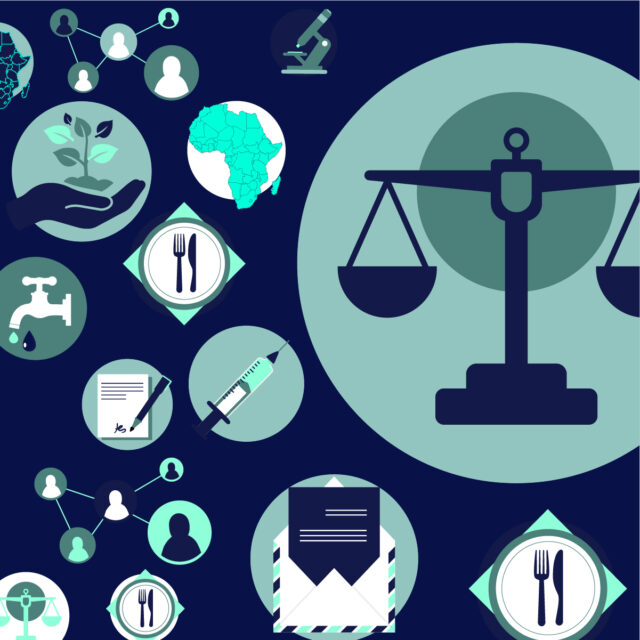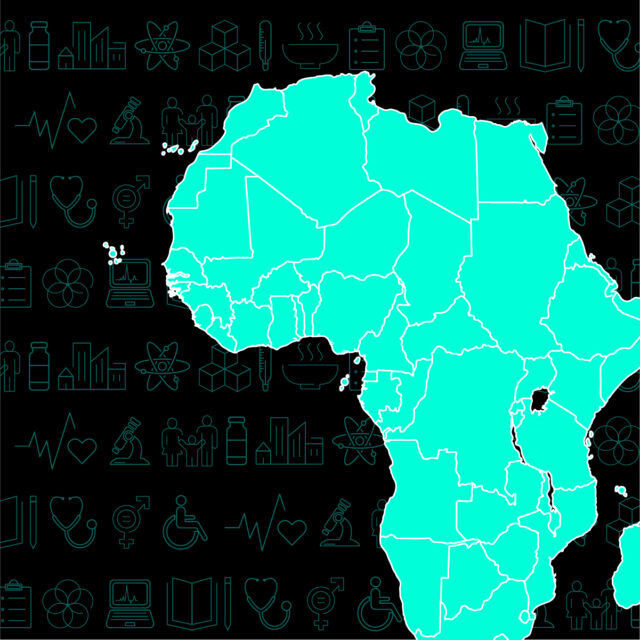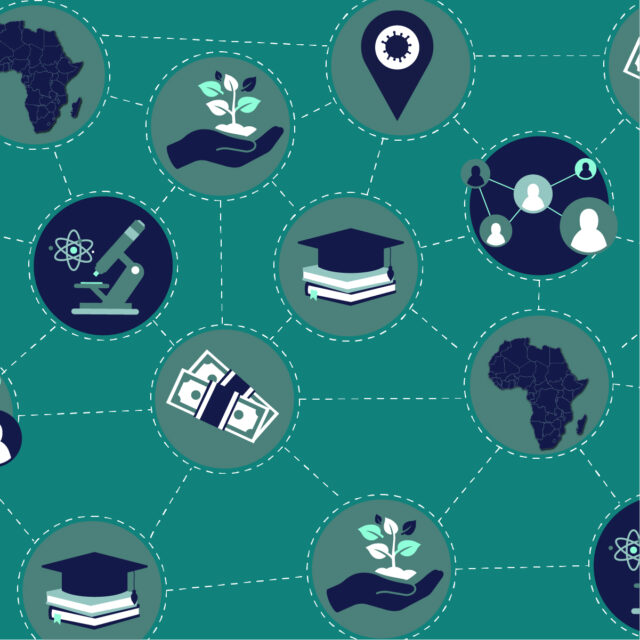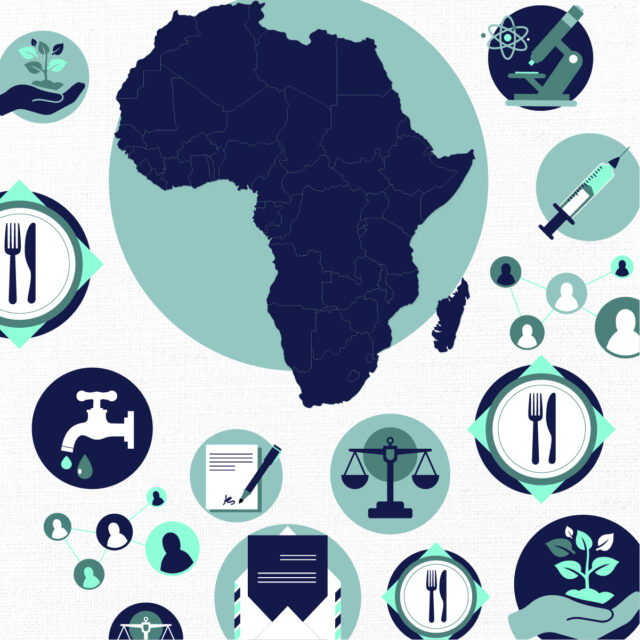A roundup of the latest news, stats, and analysis of COVID-19’s impact in Africa. View our data tracker and sign up for our weekly newsletter, and read on for Tanzania’s take two, Biden’s efforts to convene a global vaccine summit, and a South African genomics lab that can help close the knowledge gap on Africa-originating variants.
Powder keg: Global food prices were up 33% in August from the year earlier, hitting emerging markets the hardest, and reaching the highest prices since the 1970s. This is part of a wider trend in COVID-19-driven supply chain woes — impacting everything from Nike shoes to Christmas decorations. It’s a global issue, with nearly 1 in 10 people undernourished, but it could spell disaster particularly for East African countries, which are already facing alarming food shortages. Worse yet, malnutrition makes people more vulnerable to COVID-19, and high food prices can also contribute to political unrest.
Double jeopardy: Rising global oil prices, caused in part by increased demand in widely vaccinated countries, are also exacerbating the pandemic’s economic effects on the world’s poorest. Fuel prices are approaching record levels in Kenya, and remain near all time highs in South Africa despite a slight dip in recent weeks. High oil prices also contribute to increased food prices — intensifying hunger concerns.
$12 trillion: A weaker economic recovery caused, in part, by unequal vaccine access will leave the world’s poorest countries $12 trillion worse off by 2025, according to a new UN report. Delayed vaccinations could cost the global economy $2.3 trillion over that period, with low-income countries shouldering much of the cost. Rich countries may need to provide poor countries with debt relief — and in some instances, debt cancellation — to “avoid another lost decade for development.”
Tanzania’s do over: Tanzania has nearly tripled the number of COVID-19 vaccination centers to 1,548 in recent weeks, under President Samia Suluhu Hassan’s leadership. That’s a marked change from Hassan’s predecessor, John Magufuli, who denied the pandemic’s existence. The IMF has approved $567 million in emergency support for Tanzania to help finance its COVID-19 vaccination campaign. A government spokesperson said some of the funds will be used to construct a plant for making vaccines, including for COVID-19.
Broken record: This week WHO Chief Tedros Adhanom Ghebreyesus admitted he “may sound like a broken record” but he doesn’t care, joining the heads of the African CDC, UNECA, and others in urging rich countries to ensure that every country can vaccinate at least 40% of its population by the end of 2021 and 70% by mid-2022. Let’s just restate the facts: Of the 5.7 billion COVID-19 doses administered globally, only 2% have been in Africa, home to 1.3 billion people. Yes, we’re fed up saying it too.
Help at last? US President Joe Biden will convene a global summit next week to secure new commitments to end the pandemic, including fully vaccinating 70% of the world’s population by next September. The list of targets also includes ramping up vaccine manufacturing, increased financing for low-income countries to help them fight the pandemic, increasing testing and PPE production, and taking steps to safeguard against future pandemics.
Triple threat: Nigeria is experiencing one of its worst cholera outbreaks in years, exacerbated by the pandemic, which has stretched the resources of state and local governments. More than 2,300 people have died from cholera in this outbreak, nearly as many as from COVID-19 (over 2,600, according to ONE’s Africa COVID-19 tracker). The pandemic is also hindering efforts to vaccinate populations against vaccine-derived polio in hard-to-reach areas in the country’s northwest. With the country fighting diseases on multiple fronts, less than 2% of Nigerians have received at least one COVID-19 vaccine dose.
Dhanyavaad: India may resume COVID-19 vaccine exports to Africa this year, after hitting pause during a domestic spike in case earlier in 2021. In other good news, European Commission President Ursula von der Leyen pledged to donate 200 million extra coronavirus vaccine doses to low- and middle-income countries by mid-2022, in addition to the 250 million already promised by the end of the year.
Chasing the herd: The rapid spread of the Delta variant is forcing experts to move the goalposts on herd immunity. The African Union is considering increasing its vaccination goal for next year from 60% to 70% in light of the more easily transmissible variant. An additional $300 million in financing would be needed to secure the extra doses required to meet the higher threshold — but keep in mind that the Economist Intelligence Unit (EIU) reports that the actual herd immunity threshold is probably closer to 90%. COVAX would need until March if the target is raised to just 70%, with more money and more time needed if they are to follow EIU’s lead.
COVID roulette: Low vaccine rates across the African continent could lead to the proliferation of COVID-19 variants that hinder global efforts to end the pandemic, warned 293 scientists from 112 African and 25 international organizations. The scientists are studying two variants in West and East Africa to determine whether they are variants of concern, but cautioned that “it would be prudent to assume the worst.” Experts warn that immunocompromised HIV-infected people may harbor the virus longer, giving it greater opportunity to mutate. 7.8 million HIV-infected people live in South Africa, where the emergence of a new variant is being closely monitored.
Measure what matters: A new genetic sequencing research center in Cape Town, launched by the WHO and the South African National Bioinformatics Institute, should better enable scientists to track COVID-19 variants in Africa. The continent currently accounts for just 1% of over 3 million COVID-19 sequences conducted worldwide, leaving a significant blindspot in the global fight to contain the virus and end the pandemic.
Recipe for disaster: African officials are urging vaccine manufacturing countries to lift export bans and intellectual property restrictions so that African countries can produce their own vaccines. There are at least 12 COVID-19 production facilities set up or in the pipeline across six African countries, though several are “fill and finish” facilities and others are months or years away from production capabilities. Last October, Moderna announced it would not enforce patents on its mRNA vaccine during the pandemic, raising hopes that it could be copied and manufactured at scale in Africa. Nearly one year later, the WHO-supported tech transfer hub in South Africa has yet to reach a deal with Moderna to share its vaccine recipe so that production can begin. Tick-tock…
Never again: The European Union announced the creation of a new agency designed to better respond to future pandemics. The new agency is intended to “make sure that no virus will ever turn a local epidemic again into a global pandemic.” Let’s hope so: experts in India are feverishly working to unravel the mysteries of the Nipah virus, which has a 70% mortality rate, and has the potential to cause “the worst pandemic humanity has ever faced” if it mutates and becomes more transmissible in humans.
The numbers
- 35%: The proportion of Vietnam’s textile and garment factories that were shut down because of surging COVID-19 cases, leading to a sharp stagnation in the global supply chain.
- 134.72: The highest cost of gasoline per liter (in shillings) in Kenya in over a decade
- 9.3: The number of vaccinations per 100 people in Africa. The next-lowest region is Oceania — with 69 vaccinations per 100 people.
More reads
- The World Food Programme cut food rations and cash transfers by 10-30% in refugee camps due to pandemic-driven donor cuts. ONE’s Aftershocks Data Journalism Fellow, Gloria Lalam, explores how refugees at the Pagirinya camp in Uganda are compensating for these shortages.
- Our team calculated the scale of vaccine inequity using swimming pools. Spoiler: the disparity is deadly, costly, and makes for a grim pool party.
- COVID-19 has reversed progress on eradicating extreme poverty by about four years, and upended progress on eliminating gender inequality and vaccinating children against communicable diseases, according to the 5th annual Goalkeepers report published by the Bill & Melinda Gates Foundation. The report warns that vaccine inequities “raise the very real risk that high-income countries and communities will begin to treat COVID-19 as another epidemic of poverty: Not our problem.”
- Thomas Wright and Colin Kahl’s new book, Aftershocks: Pandemic Politics and the End of the Old International Order, analyzes the ways COVID-19 exposed the limits of the old international order and the pandemic’s potential impacts on the world order in the 21st century.
- The vaccine industry is beset with market failures that have caused it to underperform, necessitating a profound overhaul, says a new research paper by Felix Lobo at the South Centre.
- Johns Hopkins Center for Communication Programs’ COVID Behaviors Dashboard is a data-rich resource for analyzing global and national trends on individuals’ attitudes and behaviors around COVID-19, vaccines, testing, and more.



